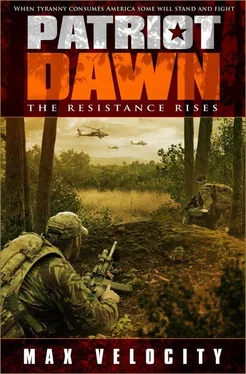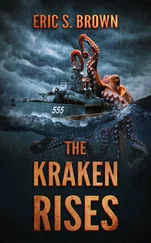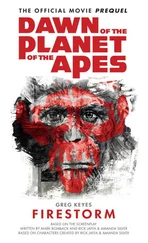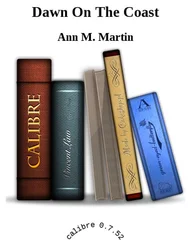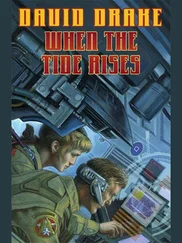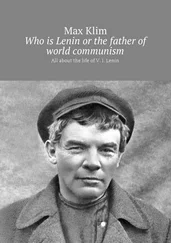There was an element of identifying potential instructors also, so that they could ‘train the trainer’ and spread the burden — there was no way that as they got up to company level operations they could run the whole program themselves, monitoring everyone. So there would be a phased element to it, as they ‘trained the trainers’ and allowed these instructors to work with new recruits as they were phased in.
The allocation of teams and leaders would be reviewed, amended and reorganized as necessary. No doubt there would be problems and personality clashes as time went on. Some would be solved; others would result in reorganization and even removal of personnel.
If teams were working, then the priority would be to keep them together to maintain small unit integrity. Teams would not be reorganized simply for the sake of it, only if personality clashes or leadership failures needed to be addressed.
However, again they were adamant that they must deal with people in a fair manner and not squash too many egos — they did not want disaffected fighters informing or defecting to the Regime. In fact, Jim was adamant that if he got the feeling someone was really bad news, he would take care of them himself. Given the safety issues at stake, Jack did not raise too much complaint about this.
Over the next few days, the fighters already recruited by Bill started to arrive in small groups, transported in by the Resistance movement network utilizing multiple routes and modes of transport. Some came up the trail from Zulu, just as Jack and Jim had. Others arrived in small convoys; still more had been dropped off a distance away and hiked in through the woods with a guide.
There was a hard core group that filtered in as the first arrivals. They were the original platoon sized group, three squads and a headquarters element that had been working with Bill as an ad hoc militia grouping since before the collapse.
This group was mostly veterans and had been training together for a while. Jack was hoping that this group would provide him with a solid cadre of instructors. The success of this would depend on how malleable they were to his training ideas, and the leaving of any excessive egos out of the training camp.
Since the collapse, with the wild living out in the woods, personal grooming had taken a backseat. The groups that were showing up looked like mountain men, with beards and hair growing in, often cut off raggedly at the collar. They turned up in a variety of outfits and clothing.
Jack and Jim had discussed this and were not planning on doing much about it. It had the potential to turn into a sore point with Major Cassidy, but they were an irregular force fighting an insurgency style conflict, so uniforms and being ‘dress right dress’ was not what it was about.
They had agreed that the focus would be on strong self-discipline within an organization of leaders appointed into command tasks; some permanent, others temporarily allocated a command role for specific missions when groups came together. Leadership roles would be merit based and could be taken away for poor performance or if the team lost faith in an individual.
It would be trial by ordeal and fire for all of them. Given that there was no pay or career advancement involved, they hoped to foster a culture of excellence based on personal motivation rather than organizational politics.
As for the uniform thing, clothing was to be policed for serviceability and alternatives provided if personnel did not have it. Acceptable clothing included military or outdoor clothing in military or hunting camouflage, as well as drab and earth tone colors. No blue jeans, they did not work well when wet.
Clothing had to be serviceable and workable in the outdoors environment, and the right color. More mainstream civilian clothing would be retained for use in necessary covert or close reconnaissance operations.
Boots were a key factor, and if personnel turned up without suitable footwear then it had to be sourced for them. They would be out working through the winter and good footwear, layers of warm clothing, waterproof gear and changes of socks were essential.
In terms of tactical gear, the focus was not on being uniform or identical, but rather that each fighter had the correct equipment in some format, depending what could be sourced or foraged. Everyone that did not have it already was issued body armor, including ballistic plates, and the necessary tactical pouches for carrying magazines and equipment. The extra supply came from the purloined truck that Major Cassidy had produced.
The minimum personal protection allowed was a plate carrier, with the preference being for a full set of soft armor with plates. Helmets were also issued, but their use was to be reserved for conventional set-piece operations, when they happened, as well as defensive tasks.
Each fighter had to show that he had magazine pouches for a minimum of eight thirty round magazines on his tactical vest or battle belt. He also had to carry an IFAK (Individual First Aid Kit) as well as an additional CAT (combat application tourniquet) on his vest. He had to have a rucksack, daypack and water source. If he was deficient any gear, it was sourced or reallocated to bring everyone up to standard.
The rest of the fighters’ personal load, such as sleeping and outdoors gear and all the various ancillaries was either provided by the fighters themselves or found from other sources. Some gear was donated from Zulu where those static there had no need for it.
It caused a little consternation, but Jack and Jim decided on a specific weapons policy. The aim was ultimately for everyone to run a personal rifle that fired 5.56mm NATO. The preference was for M4 style weapons. The idea was that this was the ammunition that the Regime was using and it would make ammunition resupply and reallocation easier.
Inter-operability was the key. 7.62mm NATO was also useful, because it was used in the Regime 240 machine-guns. They already had a number of captured M4, SAW and 240 weapon systems, as well as sniper rifles, and these would be allocated as required from the central armory. This meant that AK type weapons, utilizing the 7.62 x 39mm short round, were out in the long run.
The Regime military mostly used military 5.56mm 62 grain ammunition for their M4 rifles. Those fighters with AR15 style weapons, many of which appeared on the surface identical to the M4 but were not chambered for 5.56mm, could only use .223 ammunition.
As far as Jack and Jim knew, 5.56 rifles could successfully use .223 ammunition, but the other way around could cause problems to varying degrees. Even if it simply caused stoppages, it was an issue in combat. There was a limited supply of this .223 ammunition in the hands of the Resistance, just what the fighters had personally stored, and any looted resupply from Regime units would be 5.56mm.
This posed a problem, and just as with the AK style rifles, Jack simply couldn’t tell the guys to dump their AR15’s. The compromise was that captured M4’s were handed out, as many as they had, and those left with AK or AR15 rifles, using either the 7.62mm short or .223 ammunition, would continue to run those rifles until suitable replacements could be found as operations were conducted.
Jack had been standing outside the barn talking to a group of the arriving original platoon. They were a wild looking bunch but he was getting a good feeling off them. He was just thinking that his worries about problem egos were ill founded and it looked like the training should go smoothly. The group was dispersing to go to the accommodation area.
The shout came from his left, “Hey, Berenger you douche, you owe me twenty bucks!”
Jack turned and saw a wiry man dressed in filthy outdoor clothes, a pair of intense blue eyes staring at him out of a heavily bearded face. Jack stared at him intently, and then the recognition dawned.
Читать дальше
